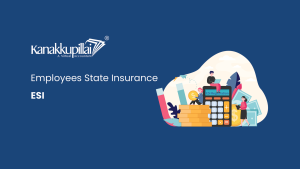![]()
Non-Creamy Layer Certificate
The Non-Creamy Layer (NCL) Certificate serves as a pivotal instrument in India’s efforts to ensure the equitable distribution of socio-economic benefits, particularly in the context of reservations and affirmative action policies. It was introduced to prevent individuals within the Other Backward Classes (OBC) category from taking undue advantage of reservation benefits if they belong to the relatively affluent and socially advanced segment referred to as the ‘creamy layer.’ The certificate is a powerful means of empowering social and economic inclusion by focusing on the truly disadvantaged sections of society.
This article explores the historical context of the NCL certificate, its eligibility criteria, the process of obtaining one, and its implications for Indian society. It delves into how the certificate helps target benefits, promotes social inclusion, empowers marginalized communities, and reduces socio-economic inequalities. Despite its significant role in the pursuit of social justice, the NCL certificate also faces challenges, including subjectivity in its assessment and the potential for fraud. Nevertheless, it remains a vital component in India’s ongoing discourse on reservations and affirmative action, striving to strike a balance between merit-based selection and the pursuit of social and economic equity.
Understanding the Historical Context
The Non-Creamy Layer (NCL) Certificate is rooted in India’s complex history of affirmative action and reservations. India’s constitution, recognizing historical injustices and discrimination, introduced reservations for Scheduled Castes (SCs), Scheduled Tribes (STs), and Other Backward Classes (OBCs) to bridge socio-economic gaps. The term “Non-Creamy Layer” gained prominence with the implementing of the Mandal Commission recommendations in the late 1980s. The Mandal Commission, officially known as the Socially and Educationally Backward Classes Commission, was appointed to identify and uplift socially and educationally disadvantaged groups. It recommended reserving 27% of government jobs and public sector positions for OBCs. However, it introduced the concept of the ‘creamy layer’ within OBCs, recognizing that not all OBC members were equally disadvantaged.
The ‘creamy layer’ refers to the relatively privileged OBC individuals based on income, education, and occupation. To ensure that reservation benefits reached those who genuinely needed them, this distinction was introduced. The NCL certificate, then, became a means of certifying that OBC individuals do not belong to the ‘creamy layer’ and are thus eligible for OBC reservations. Understanding the historical context of the NCL certificate is crucial to appreciate its role in ensuring that affirmative action policies and reservations reach the intended beneficiaries, ultimately promoting social and economic inclusion in India.
The Mandal Commission
One of the pivotal moments in the history of reservations in India was the implementation of the Mandal Commission recommendations in the late 1980s. The Mandal Commission, officially known as the Socially and Educationally Backward Classes Commission, was appointed to identify the socially and educationally backward classes and recommend measures for their upliftment.
The Mandal Commission’s recommendations included reserving 27% of jobs in government and public sector undertakings for OBCs. However, it introduced the concept of the ‘creamy layer’ within OBCs, arguing that not all members of the OBCs were socio-economically disadvantaged. To ensure that the benefits of reservation policies reached those who needed them the most, the ‘creamy layer’ was to be excluded from reservation benefits.
What is the ‘Creamy Layer’?
The ‘creamy layer’ is a term used to describe the relatively affluent and socially advanced members of the OBC category. It was introduced to prevent individuals with higher socio-economic status from availing the benefits of OBC reservations, as it was felt that they were already socially and economically privileged and did not require additional assistance.
The creamy layer criteria include factors such as income, education, and occupation. Those OBC individuals who exceed the defined limits for these factors are categorized as the ‘creamy layer’ and are ineligible for OBC reservations. This distinction aimed to ensure that the reservation benefits were directed towards the truly disadvantaged among the OBCs.
Non-Creamy Layer Certificate: Eligibility Criteria
To apply for a Non-Creamy Layer Certificate, one must meet specific criteria that establish their eligibility. These criteria are essential in determining whether an individual belongs to the creamy layer or not. The key factors taken into account for eligibility are:
- Income: The primary criterion is the annual income of the family. Income limits may vary from state to state and may be revised periodically. Typically, individuals whose family income exceeds a certain threshold are considered part of the creamy layer.
- Education: Educational qualifications are also taken into account. Individuals who have completed postgraduate education or have achieved specific educational milestones are often classified as creamy-layer candidates.
- Occupation: The occupation of the applicant or their family members may also be considered. If they are in certain professional categories or hold positions of authority, they might be deemed part of the creamy layer.
It is crucial to note that these criteria may be subject to change based on government policies and state-specific regulations. Therefore, it is essential to verify the specific criteria applicable at the time of application.
The Process of Obtaining a Non-Creamy Layer Certificate
Obtaining a Non-Creamy Layer Certificate is a fairly straightforward process, typically handled by government authorities at various levels. Here is a step-by-step guide to obtaining the certificate:
- Eligibility Check: The first step is to determine whether the applicant meets the eligibility criteria. This can be done by assessing the family’s income, education qualifications, and occupation status.
- Document Gathering: The next step involves collecting the necessary documents, which may include proof of income, educational qualifications, and other supporting documents.
- Application Form: The applicant must obtain the prescribed application form for the Non-Creamy Layer Certificate. This form is usually available at government offices, and it can also be downloaded from official government websites.
- Filling the Form: The applicant needs to fill in the application form with accurate information, attaching all the required documents.
- Submission: Once the form is completed and the necessary documents are attached, it should be submitted to the designated authority. The submission can be done in person at the relevant government office or through online portals, where applicable.
- Verification: The authorities will then carry out a verification process to confirm the applicant’s eligibility. This may involve checking the submitted documents and conducting interviews if necessary.
- Issuance: If the application is approved, the Non-Creamy Layer Certificate is issued to the applicant. It typically includes details about the applicant’s family income, education, and occupation status.
- Validity: The certificate is usually valid for a specified period and may need to be renewed when it expires.
It’s important to note that the process and requirements for obtaining a Non-Creamy Layer Certificate may vary from state to state, as the responsibility for issuing these certificates often falls under state governments.
Implications of Non-Creamy Layer Certificate
The Non-Creamy Layer Certificate plays a crucial role in implementing reservation policies in India. Its implications are far-reaching and multifaceted:
- Targeted Benefit: By excluding individuals belonging to the creamy layer from reservation benefits, the certificate ensures that affirmative action policies are directed toward those who genuinely need them. This targeted approach enhances the effectiveness of reservation policies.
- Social Inclusion: The certificate promotes social inclusion by preventing individuals with higher socio-economic status from taking undue advantage of reservations. It allows for a fairer distribution of opportunities among the less privileged sections of society.
- Economic Empowerment: By reserving opportunities in education, employment, and government services, reservation policies contribute to economic empowerment. The certificate ensures that these opportunities are channelled to those who require them to escape the cycle of poverty.
- Merit and Equity: Non-Creamy Layer Certificate strikes a balance between merit and equity. It acknowledges the need to provide opportunities based on socio-economic disadvantages while not compromising the quality of candidates selected for various positions.
- Reducing Inequality: The certificate is instrumental in reducing inequalities stemming from historical discrimination and social hierarchies. It helps in levelling the playing field and promoting social justice.
- Empowering Marginalized Communities: Through the proper implementation of the Non-Creamy Layer Certificate, individuals from marginalized communities have a better chance to access quality education and secure stable employment, ultimately leading to their overall empowerment.
Importance of Non-Creamy Layer Certificate
The importance of the Non-Creamy Layer Certificate (NCL) in India is significant and multifaceted, primarily related to the equitable distribution of reservation benefits and promoting social and economic inclusion. Here are some key points highlighting its importance:
- Ensures Targeted Benefits: The NCL certificate plays a crucial role in ensuring that the benefits of reservation policies reach those individuals within the Other Backward Classes (OBCs) who genuinely need them. Excluding those classified as the ‘creamy layer’ helps direct these benefits more effectively to the socio-economically disadvantaged sections of the OBC community.
- Promotes Social Inclusion: The certificate is instrumental in promoting social inclusion by preventing individuals with higher socio-economic status from exploiting the reservation system. It creates a level playing field, allowing marginalized groups to access opportunities in education and employment.
- Economic Empowerment: Through the NCL certificate, individuals from economically disadvantaged backgrounds are given access to opportunities in education and government jobs. This not only uplifts them economically but also breaks the cycle of poverty within these communities.
- Balances Merit and Equity: The certificate balances merit-based selection and equity. While reservations are designed to address historical injustices, the NCL certificate helps maintain the quality of candidates selected for various positions, ensuring that merit is not compromised.
Challenges and Controversies
While the Non-Creamy Layer Certificate is designed to ensure the equitable distribution of benefits, it is not without its challenges and controversies:
- Subjectivity: Determining the ‘creamy layer’ is often subjective and can lead to disputes. The criteria used for assessment may vary from one state to another, and this lack of uniformity can result in confusion and disagreement.
- Fraud and Misrepresentation: Some individuals may attempt to manipulate their income or other factors to obtain the certificate fraudulently, which undermines the effectiveness of the system.
- Reservations in the Private Sector: The certificate primarily covers government jobs and educational institutions. However, the question of extending reservations to the private sector remains a contentious issue.
- Reservation Caps: The reservation policies in India have faced debates about the appropriate percentage of reservations, with concerns raised about the balance between affirmative action and merit-based selection.
- Backwardness Assessment: Assessing socio-economic backwardness solely based on income, education, and occupation may not capture the full extent of disadvantage, especially in the case of traditionally marginalized communities.
Conclusion
The Non-Creamy Layer Certificate is an essential tool in implementing affirmative action policies in India. It ensures that the benefits of reservations are directed towards those who genuinely need them to overcome historical disadvantages. While it has effectively promoted social inclusion and economic empowerment, challenges such as subjectivity and fraud persist. The certificate’s role in the ongoing discourse on reservations and affirmative action is vital, and it remains a crucial component in the pursuit of social justice and equality in India. To address these challenges and enhance the effectiveness of the Non-Creamy Layer Certificate, continual review and refinement of the criteria and processes are necessary, taking into account the evolving socio-economic landscape of the country.
How and Why Kanakkupillai?
Kanakkupillai, a trusted service provider in India, can assist you in obtaining a Non-Creamy Layer Certificate with ease and efficiency. Our expert team guides you through the application process, helping you gather the required documents, complete the application accurately, and ensure a hassle-free submission.
Choose Kanakkupillai for their professional expertise, timely services, and commitment to simplifying bureaucratic procedures.
By partnering with Kanakkupillai, you save time, reduce stress, and increase your chances of a successful application. Don’t navigate the complexities of the NCL certificate process alone; let Kanakkupillai help you secure your Non-Creamy Layer Certificate swiftly and effectively. Get started today for a seamless experience!





